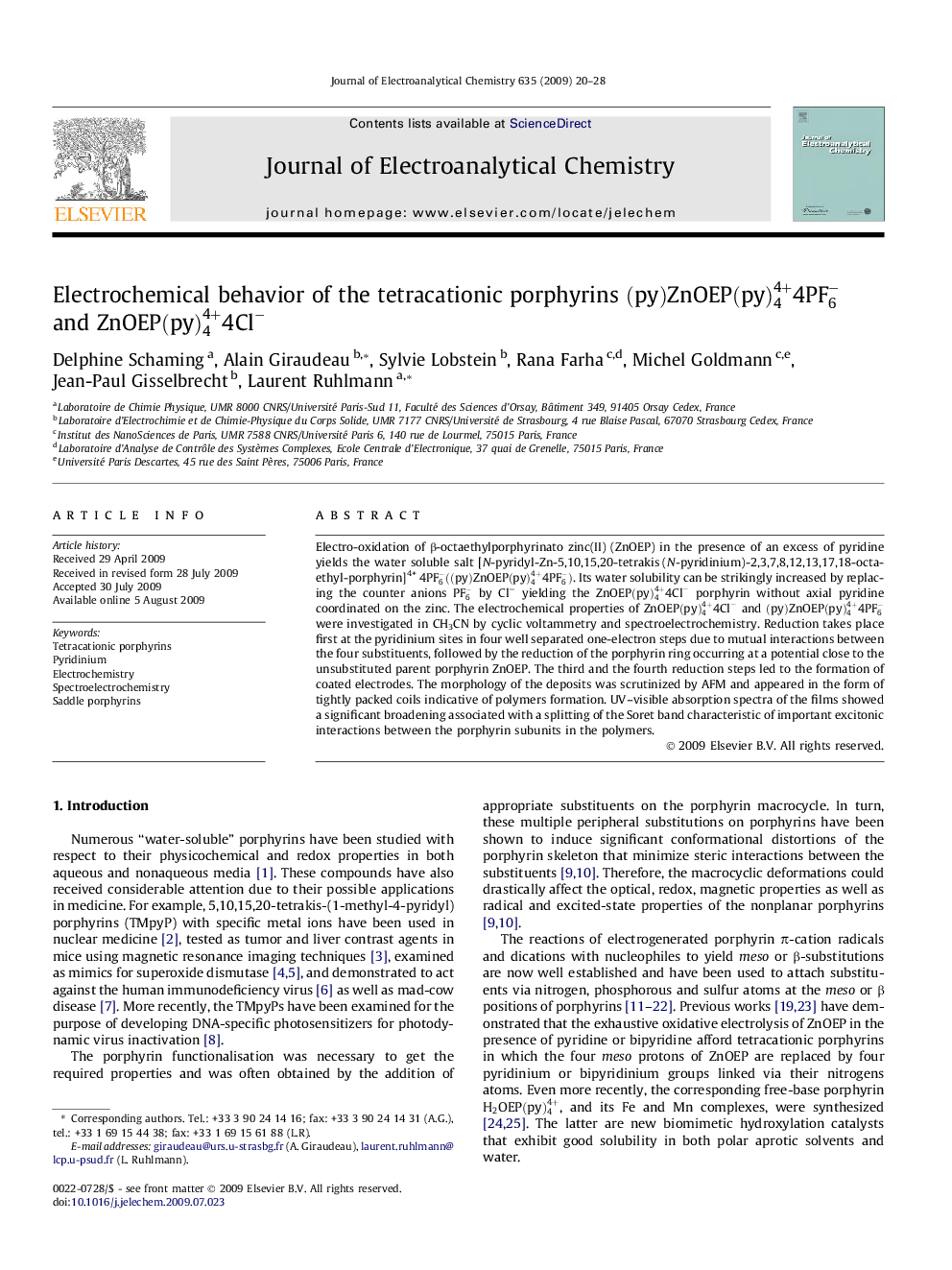| Article ID | Journal | Published Year | Pages | File Type |
|---|---|---|---|---|
| 220172 | Journal of Electroanalytical Chemistry | 2009 | 9 Pages |
Electro-oxidation of β-octaethylporphyrinato zinc(II) (ZnOEP) in the presence of an excess of pyridine yields the water soluble salt [N-pyridyl-Zn-5,10,15,20-tetrakis (N-pyridinium)-2,3,7,8,12,13,17,18-octaethyl-porphyrin]4+4PF6-((py)ZnOEP(py)44+4PF6-). Its water solubility can be strikingly increased by replacing the counter anions PF6- by Cl− yielding the ZnOEP(py)44+4Cl- porphyrin without axial pyridine coordinated on the zinc. The electrochemical properties of ZnOEP(py)44+4Cl- and (py)ZnOEP(py)44+4PF6- were investigated in CH3CN by cyclic voltammetry and spectroelectrochemistry. Reduction takes place first at the pyridinium sites in four well separated one-electron steps due to mutual interactions between the four substituents, followed by the reduction of the porphyrin ring occurring at a potential close to the unsubstituted parent porphyrin ZnOEP. The third and the fourth reduction steps led to the formation of coated electrodes. The morphology of the deposits was scrutinized by AFM and appeared in the form of tightly packed coils indicative of polymers formation. UV–visible absorption spectra of the films showed a significant broadening associated with a splitting of the Soret band characteristic of important excitonic interactions between the porphyrin subunits in the polymers.
